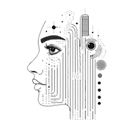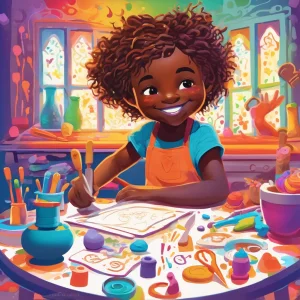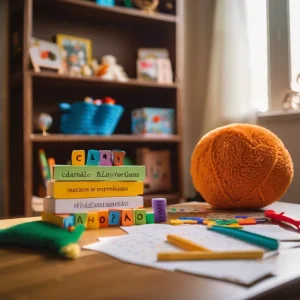Activity
Similar Activities
Sensory Music-Making Session: Sound Story Drawing Adventure
Children’s Age: 2–2.5 years
Activity Duration: 5 – 20 minutes
A sensory music-making activity using household items to enhance sensory development and introduce children to the world of music.
Activity Duration: 5 – 20 minutes
Musical Painting Fun: Expressive Art and Melodies
Children’s Age: 2–3 years
Activity Duration: 10 – 30 minutes
This activity involves children creating paintings while listening to music that matches the mood of sentences they choose. It helps with sensory development, and social-emotional …
Activity Duration: 10 – 30 minutes
Enchanted Textures: Sensory Treasure Hunt Adventure
Children’s Age: 0 month – 6 years
Activity Duration: 5 – 10 minutes
Let's go on a Sensory Treasure Hunt adventure! We will explore different textures using our sense of touch. Gather textured items, hide them around the room, and guide the child to…
Activity Duration: 5 – 10 minutes
Sensory Exploration Journey: Household Items Adventure
Children’s Age: 0 month – 6 years
Activity Duration: 10 minutes
Let's explore different textures and shapes using household items! Find a big container and items like a wooden spoon, silk scarf, plastic cup, sponge, and cotton ball. Sit togethe…
Activity Duration: 10 minutes
Empathy Through Storytelling: Musical Sensory Experience
Children’s Age: 2–3 years
Activity Duration: 5 – 15 minutes
Let's dive into Musical Sensory Storytime! Get ready for a fun experience that will engage all your senses. We will read a story, play musical instruments, create art, and enjoy co…
Activity Duration: 5 – 15 minutes
Enchanted Sensory Treasure Basket Exploration
Children’s Age: 6 months – 1.5 years
Activity Duration: 10 minutes
Explore the "Sensory Treasure Basket Exploration" activity designed to engage children's senses and support motor development in a fun way. Simply gather safe objects with various …
Activity Duration: 10 minutes
Sensory Treasure Basket Exploration: A Magical Journey
Children’s Age: 6 months – 1.5 years
Activity Duration: 10 minutes
Engage your little one with the Sensory Treasure Basket Exploration activity designed for children aged 6 to 18 months. This stimulating play experience supports sensory and cognit…
Activity Duration: 10 minutes
Enchanted Sensory Treasure Hunt for Toddlers
Children’s Age: 1.5–2 years
Activity Duration: 10 minutes
Engage toddlers aged 18 to 24 months in the Sensory Treasure Hunt for a stimulating sensory experience and physical development through movement and exploration. Gather textured it…
Activity Duration: 10 minutes
Sensory Holiday Exploration: A Magical Journey
Children’s Age: 6 months – 1 year
Activity Duration: 5 – 10 minutes
The Sensory Holiday Exploration activity is designed for children aged 6 to 12 months to discover holiday-themed textures and colors. Using safe sensory items like scarves, bells, …
Activity Duration: 5 – 10 minutes
Outdoor Tea Party and Fix-it Fun for Toddlers
Children’s Age: 2–4 years
Activity Duration: 10 – 25 minutes
Let's create a fun Outdoor Tea Party and Fix-it Station for kids aged 1 to 3. Set up a table and chairs, play tea set, pretend tools, household items for fixing, a picnic blanket, …
Activity Duration: 10 – 25 minutes
Magical Playdough Making and Sensory Adventure
Children’s Age: 0 month – 6 years
Activity Duration: 10 minutes
Let's make homemade playdough together! It's a fun sensory activity that helps children explore different textures and colors while developing their muscles and creativity. Gather …
Activity Duration: 10 minutes
Holiday Parade: Musical Social Skills Celebration
Children’s Age: 2–3 years
Activity Duration: 15 minutes
Get ready for the Holiday Music Parade! This fun activity is perfect for 2 to 3-year-old kids to enjoy music, march in a parade, and have a blast with holiday props. You'll need mu…
Activity Duration: 15 minutes



























